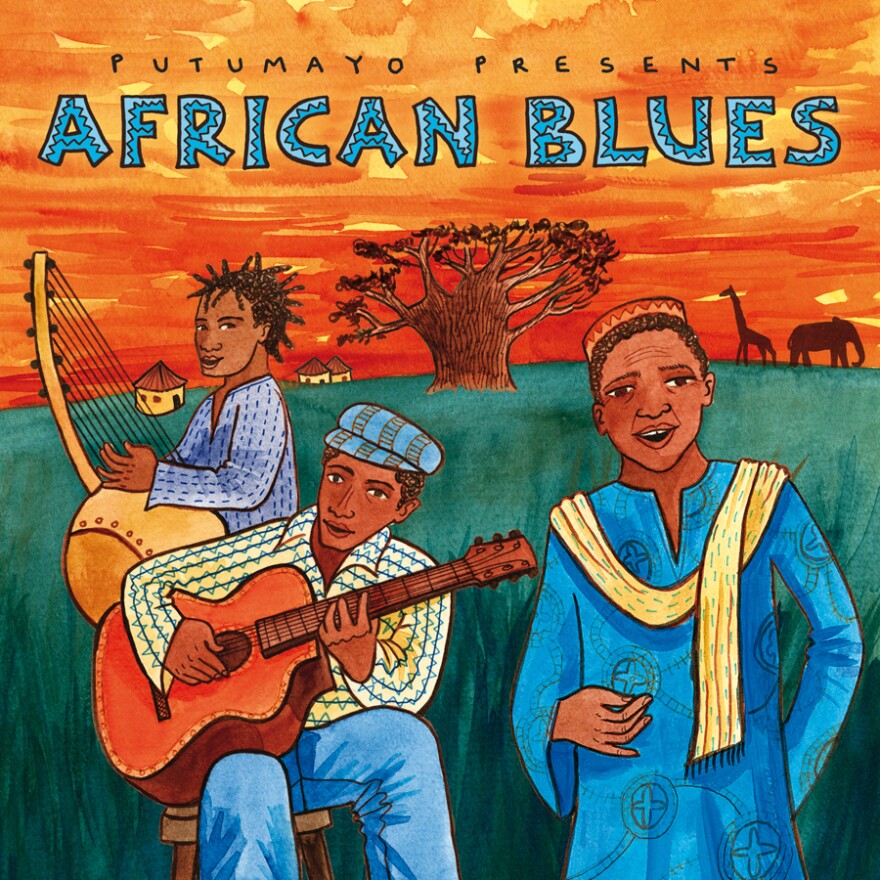I have to hand it to the Putumayo label. Since it started as a soundtrack-provider to a clothing store in the early '90s, the operation has placed racks of CDs with friendly-primitivist art by Nicola Heindl into Starbucks and Whole Foods everywhere. Putumayo is as responsible as anything for making music buyers ask "Where's the world music section?" in shops or online. Unfortunately, way too many Putumayo anthologies, even when they have promising themes, are too sweet, tame and too satisfied with murmuring in the background — which makes them hard to enjoy in a setting without a cash register.
There are several exceptions, of course. But what makes Putumayo Presents African Blues particularly fascinating is that it's a type of frequently attempted fusion that often ends up drab. I would describe this set as delicate, airy, sure-footed and strong all the way through.
The blues sounds to me like a profoundly American music, and to make too much of its connections to African modes is both dubious and even obnoxious. What cannot be denied is that many African performers are open to playing with foreign musicians who have a different style. On occasion, the efforts click as well as they do here. The tracks collected for Putumayo Presents African Blues are wisely varied in that the collaborations are often just vaguely bluesy, though two or three offer quite explicit blues flavor.
Blues back to Africa and blues out of Africa is a longstanding theme — singer and guitarist Johnny Copeland oversaw a delightful meeting in 1985 called Bringing It All Back Home. But the modern originator of the international bluesman has to be Taj Mahal. He delivers a highlight of the African Blues collection smack in the middle with the only track in English, "Dhow Countries." It's a survey-the-landscape-and-the-people narrative blues with the Culture Musical Club of Zanzibar. But it feels like a panorama of the Mississippi Delta.
Putumayo Presents African Blues hangs loose about what unifies blues and Africa, which may be no more than forceful handclaps, seductive repetitions and tart guitar tones. Best to keep the subject matter broad, as well: Titles include "Camel Shuffle," "Mali" and "Groove in G." I'm not sure how many more cuts by any of these collaborators would work, but that's the beauty of single-track greatness as a format — assemble enough, and you have an album's worth of lovelies.
Copyright 2022 Fresh Air. To see more, visit Fresh Air.



